3D Printing News Briefs: January 26, 2019
We’re starting with business first in this edition of 3D Printing News Briefs, and then moving on to design software and 3D printing materials. Mimaki USA is getting ready for the grand opening of its LA Technology Center next month, and a Sartomer executive has been elected to the RadTech board of directors. A startup will soon be offering a new cryptotoken for additive manufacturing, and the 3D Printing Association will cease operations. A simplified Blender user interface will make 3D printing easier, and Protolabs is introducing some new materials for its DMLS 3D printing.
Mimaki USA Opening Los Angeles Technology Center
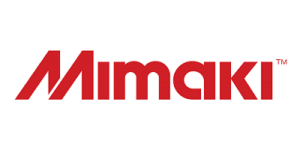 Not long after Japanese company Mimaki Engineering launched its first full-color inkjet printer in 1996, it established Mimaki USA, an operating entity that manufactures digital printing and cutting products around the world. Mimaki USA began preparing to enter the 3D printing market in 2015, and installed its first 3DUJ-553 3D printer in the Americas last winter. Now, it’s preparing for the grand opening of its Los Angeles Technology Center next month.
Not long after Japanese company Mimaki Engineering launched its first full-color inkjet printer in 1996, it established Mimaki USA, an operating entity that manufactures digital printing and cutting products around the world. Mimaki USA began preparing to enter the 3D printing market in 2015, and installed its first 3DUJ-553 3D printer in the Americas last winter. Now, it’s preparing for the grand opening of its Los Angeles Technology Center next month.
The event will take place on Friday, February 22nd from 10 am to 4 pm at the new technology center, located at 150 West Walnut Street, Suite 100, in Gardena, California. Attendees will have the chance to meet the company’s industry experts, along with Mimaki Engineering Chairman Akira Ikeda, Mimaki USA President Naoya Kawagoshi, and the regional sales managers from all seven technology centers. Live demonstrations of the company’s printers and cutters will commence after lunch, and attendees will also enjoy tours of the center and a traditional Japanese Kagami Biraki ceremony.
Sartomer’s Jeffrey Klang Elected to RadTech Board
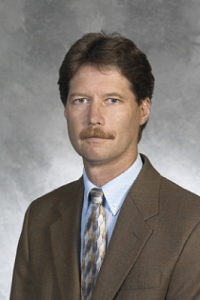 Sartomer, an Arkema Inc. business unit and developer of UV/EB curing technology products, has announced that Jeffrey Klang, its global R&D Directer – 3D Printing for Sartomer, has been elected to the board of directors for RadTech, a nonprofit trade association that promotes the use and development of UV and EB processing technologies. Sartomer is part of Arkema’s commercial platform dedicated to additive manufacturing, and Klang, an inventor with over 20 US patents who was previously the manager for Sartomer’s Coatings Platform R&D, has played an important role in helping the company develop and commercialize many of its oligomers and monomers.
Sartomer, an Arkema Inc. business unit and developer of UV/EB curing technology products, has announced that Jeffrey Klang, its global R&D Directer – 3D Printing for Sartomer, has been elected to the board of directors for RadTech, a nonprofit trade association that promotes the use and development of UV and EB processing technologies. Sartomer is part of Arkema’s commercial platform dedicated to additive manufacturing, and Klang, an inventor with over 20 US patents who was previously the manager for Sartomer’s Coatings Platform R&D, has played an important role in helping the company develop and commercialize many of its oligomers and monomers.
“Jeff’s strong leadership of Sartomer’s innovation and R&D initiatives supports the evolving needs of UV and EB processors in diverse industries, such as 3D printing, coatings, graphic arts, adhesives, sealants, elastomers and electronics. His deep understanding of UV/EB technologies, markets and regulatory requirements will make him an asset to RadTech’s board of directors,” said Kenny Messer, the President of Sartomer Americas.
erecoin Startup to Offer New Cryptocurrency for Additive Manufacturing
 A startup called erecoin, which is a product of CAE lab GmbH, is on a mission to change the world of 3D printing by combining the benefits of blockchain with future demands of the ever expanding AM community. After a year of preparation, erecoin has completed the registration of its ICO (Initial Coin Offering), and people can begin purchasing its new cryptotoken on the Ethereum public trading infrastructure starting February 18, 2019.
A startup called erecoin, which is a product of CAE lab GmbH, is on a mission to change the world of 3D printing by combining the benefits of blockchain with future demands of the ever expanding AM community. After a year of preparation, erecoin has completed the registration of its ICO (Initial Coin Offering), and people can begin purchasing its new cryptotoken on the Ethereum public trading infrastructure starting February 18, 2019.
“We are glad and proud that we, as a young startup, managed to master the necessary steps for a functioning utility token,” said erecoin Co-Founder Konstantin Steinmüller. “At the same time we are curious to see how the community supports our crowdfunding.”
Steinmüller told fellow co-founder Jürgen Kleinfelder about a concrete 3D prototype optimization project that CAE-lab was working on, which is how the idea to combine blockchain and 3D printing came about. The startup’s goal is to get rid of many of the uncertainties in the AM process chain, and blockchain can be used to conclude smart contracts to solve legal and technical questions in the industry. Because data exchange is integrated into the blockchain, a secure and efficient relationship of trust is created between the parties in the chain. Time will only tell if erecoin can achieve its goal and help accelerate additive manufacturing or if it is just hopeful hype or an inefficient way to do something no one needs.
3D Printing Association Closes
 The 3D Printing Association (3DPA) is the member-funded, global trade association for the 3D printing industry in Europe. In 2015, the 3DPA moved its base of operations to The Hague in order to develop an independent professional B2B platform for European AM industries. As the 3D printing landscape continues to grow and mature, the association has decided to permanently terminate its operations beginning February 1st, 2019. But this isn’t necessarily bad news – in fact, 3DPA is glad that CECIMO, the European Association of the Machine Tool Industries and related Manufacturing Technologies, has been able to set itself up as a leading 3D printing advocate in Europe.
The 3D Printing Association (3DPA) is the member-funded, global trade association for the 3D printing industry in Europe. In 2015, the 3DPA moved its base of operations to The Hague in order to develop an independent professional B2B platform for European AM industries. As the 3D printing landscape continues to grow and mature, the association has decided to permanently terminate its operations beginning February 1st, 2019. But this isn’t necessarily bad news – in fact, 3DPA is glad that CECIMO, the European Association of the Machine Tool Industries and related Manufacturing Technologies, has been able to set itself up as a leading 3D printing advocate in Europe.
“3DPA’s goal, derived from an online survey and a business summit at the beginning of 2015, was to provide an independent B2B platform for standardisation, education and industry advocacy. Although there are still important steps to be taken to reaching full maturity, meanwhile the landscape has become less fragmented and volatile, and additive manufacturing has been embraced as strategic pillar by well-established umbrella organisations in sectors like manufacturing, automotive, aerospace and medical appliances,” said 3DPA’s Managing Director Jules Lejeune.
“CECIMO for example, is the long standing European Association of the Machine Tool Industries and related Manufacturing Technologies. It represents some 350 leading AM companies that play a significant role in a wide variety of critical sections of the AM value chain – from the supply of all different types of raw materials for additive manufacturing and the development of software, to machine manufacturing and post-processing. In recent years, it has successfully claimed a leading role in bringing relevant topics to the regulatory agenda in Brussels.”
Simplified Blender User Interface
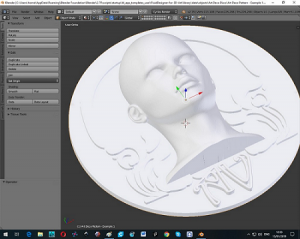 While the free 3D design and modeling software application Blender is very handy, it’s only helpful if you’re able to learn how to use it, and by some accounts, that is not an easy feat. But, now there’s a new version of Blender that includes a simplified user interface (UI) that’s so easy, even kids as young as 10 years old can figure out how to work it. FluidDesigner has used a new Blender 2.79 feature called Application Templates, which makes it possible to add a library of parametric smart objects and reduce the menu structure and interface.
While the free 3D design and modeling software application Blender is very handy, it’s only helpful if you’re able to learn how to use it, and by some accounts, that is not an easy feat. But, now there’s a new version of Blender that includes a simplified user interface (UI) that’s so easy, even kids as young as 10 years old can figure out how to work it. FluidDesigner has used a new Blender 2.79 feature called Application Templates, which makes it possible to add a library of parametric smart objects and reduce the menu structure and interface.
“Application Templates allows for the simplification of the UI but with the whole power of Blender in the background. You can access nearly all of Blender commands from the Spacebar or by switching panels. Another way to look at it is that it is an Application Template is an almighty Add-On,” Paul Summers from FluidDesigner said in an email.
“All objects are either Nurbs or Bezier (2D) Curves for ease of editing. Nurbs objects in particular can be joined together to create personalised jewellery or artwork quickly and simply.
“There is no need to go to the trouble of joining objects using Boolean modifiers, instead you simply overlap Nurbs objects and then run the *.obj file through Netfabb Basic to repair any issues created with Blender objects. With its much simplified interface, created by Andrew Peel, FluidDesigner for 3D Printing with its parametric smart objects (Nurbs curves) is suitable for even the novice user. The current version runs under Blender 2.79 and can be accessed from the File menu.”
Protolabs Adds New DMLS Materials
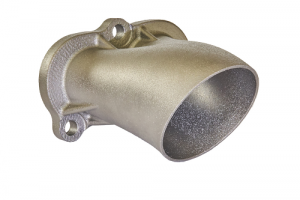 Protolabs, a digital manufacturing source for custom prototypes and low-volume production parts, has announced that it is enhancing its direct metal laser sintering (DMLS) offering with two new materials. Nickel-based Inconel 718 is a heat- and corrosion-resistant alloy with high creep, fatigue, rupture, and tensile strength, is able to create a thick, stable, passivating oxide layer at high temperatures, which protects it from attack – making it an ideal material for aerospace and other heavy industries for manufacturing gas turbine parts, jet engines, and rocket engine components.
Protolabs, a digital manufacturing source for custom prototypes and low-volume production parts, has announced that it is enhancing its direct metal laser sintering (DMLS) offering with two new materials. Nickel-based Inconel 718 is a heat- and corrosion-resistant alloy with high creep, fatigue, rupture, and tensile strength, is able to create a thick, stable, passivating oxide layer at high temperatures, which protects it from attack – making it an ideal material for aerospace and other heavy industries for manufacturing gas turbine parts, jet engines, and rocket engine components.
Maraging Steel 1.2709 is a pre-alloyed, ultra-high strength steel in the form of fine powder. It’s easy to heat treat with a simple thermal age-hardening process, and offers high hardness and high-temperature resistance, which makes it perfect for high performance industrial and engineering parts and tooling applications. These two new Protolabs materials additions help reinforce the company’s enduring reputation as one that can offer an impressive range of metals.
Discuss these stories and other 3D printing topics at 3DPrintBoard.com or share your thoughts in the Facebook comments below.
The BIG IDEAS for UV + EB Technology Conference is the Place to Learn About Photopolymers and 3D Printing
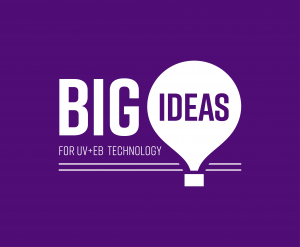
The Radtech BIG IDEAS for UV+EB Technology conference takes place on Tuesday, March 19th and Wednesday, March 20th in Redondo Beach California. The BIG IDEAS for UV+EB Technology is the place to learn about advances in photopolymer material development for 3D printing and Additive Manufacturing.
By being specialized and focused on UV curable materials, this two-day conference is the one place in the world to find out what is happening in UV curable 3D printing technologies. This is the most efficient way for you to in one to be up to speed with the current state of UV curing in 3D Printing. All of the critical leaps in photopolymer technology from new materials to new industrializations of products and new applications will be discussed here. You can learn from companies such as Ford, Carbon, Formlabs, Fast Radius, Origin, Sartomer, Allnex, NIST, and more. At the conference, you can also learn directly from exhibitors, other attendees, and of course the speakers. The technologies Inkjet, stereolithography, DLP as well as emerging technologies will be covered.

Some speakers will include Darryl Boyd, of the US Naval Research Lab who will talk about “Photopolymerization of Thiolyne Polymers for Use in Additive Manufacturing.” While Ali Khademhosseini of UCLA will discuss “Light-Enabled Materials for Regenerative Engineering.” Ellen Lee, of Ford, will talk about, “Driving Additive Manufacturing Towards Production of End-Use Parts.” You can have a look at the complete program here.
Dr. Mike Idacavage is the Session Chair for Additive Manufacturing at the conference. We reached out to him to find out what is happening in the UV curables for 3D printing space.
Who are you looking to reach?
“We are looking to reach anyone within the entire photopolymer supply chain that is looking for a big idea in materials and processing to transition their SLA, DLP, and inkjet 3D printing from prototyping to production parts. We want the chemistry suppliers, material developers, equipment builders, and users of 3D printing and additive manufacturing to work together to build a stronger photopolymer supply chain and this is done through sharing big ideas.”
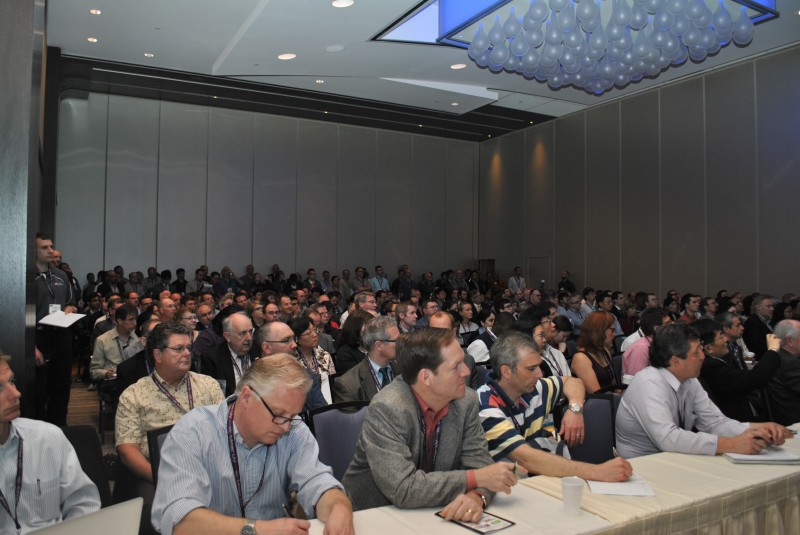
Is there anything unique or special about the conference?
“While many other 3D printing and additive manufacturing conferences focus on all the different printing processes, we focus only on photopolymer materials, and we bring together the experts and industry leaders to discuss big ideas. It is this deep dive into the science and applications of photopolymer 3D Printing/Additive Manufacturing that makes the BIG Ideas conference unique when compared to just about any (all?) other conferences in this field.”
What makes photopolymers exciting right now?
“Like most areas of chemistry, research on expanding the boundaries of what photopolymers can achieve has been steadily moving forward. However, what has accelerated the rate of development in photopolymers has been the demands of a wide range of industrial applications. Due to the tremendous pull of new applications, including Additive Manufacturing, Raw Material supply companies have focused on pushing the performance of photopolymers to meet the needs of the end user.”
What are the advantages of printing with photopolymers?
“Several advantages differentiate the use of photopolymers as a base material in 3D Printing from other methods. One f the most significant is that objects printed using photopolymers are typically stronger in the Z directions. During 3D printing using photopolymers, a chemical reaction takes place in the confined area where the UV energy interacts with the UV curable raw materials. The increased strength results from chemical bonding that takes place between the printed layers. As most objects printed by Additive Manufacturing require strength that is at least comparable to objects made by traditional methods such as injection molding, the increased strength in the Z direction is important. Another advantage in the use of photopolymers is the increase in resolution that results from focusing a very narrow region of UV energy in a liquid resin formulation to start the formation of a solid photopolymer. This gives a higher level of layer resolution than other more common forms of Additive Manufacturing such as FDM or SLS. There have been published reports of resolution in the nanometer scale using photopolymers in academic labs. While this is not yet practical in industry, it does indicate the potential for photopolymers. A third advantage is a result of the higher resolution. When properly tuned with the printer, an almost smooth surface can result which minimizes or eliminates any need for surface finishing of the printed object.”
What are some exciting developments in photopolymers?
“In my opinion, the two most exciting areas of photopolymer development work are improvements to the raw materials used in the resin formulations and work being done in formulation labs to creatively combine different chemistries to achieve performance not yet obtainable from a single class of UV reactive materials.”
Are materials improving?
“Yes! Most raw material manufacturers are investing research time in the development of new materials that extend the performance of the fully cured photopolymer. An example of this is the current work being done by different companies to produce a liquid UV curable material that is both tough and flexible after cure. This target is extremely challenging, but results are being reported at conferences such as Big Ideas that clearly show that the cured performance properties are being expanded to the levels required by end-use.”
What kind of new manufacturing applications do you see emerging in 3D printing photopolymers?
“The majority of the current efforts in photopolymer Additive Manufacturing are focused on targeting industrial applications where individual/single or short manufacturing runs are needed. In addition, the performance of the object in the application requires properties currently obtained by bulk polymers using traditional manufacturing methods such as injection molding. Examples of the marriage between individual production of an object that must perform in the field and customization would be in the automotive industry in the custom replacement of hard to get parts, the shipping industry in preventing idle time of trains/ships by quickly making a replacement part and the electronics industry in the custom manufacture of earphones.”
Would you like to learn more? See all of the exhibitors, scheduled talks and pricing information on the Radtech BIG IDEAS for UV+EB Technology Conference here.
